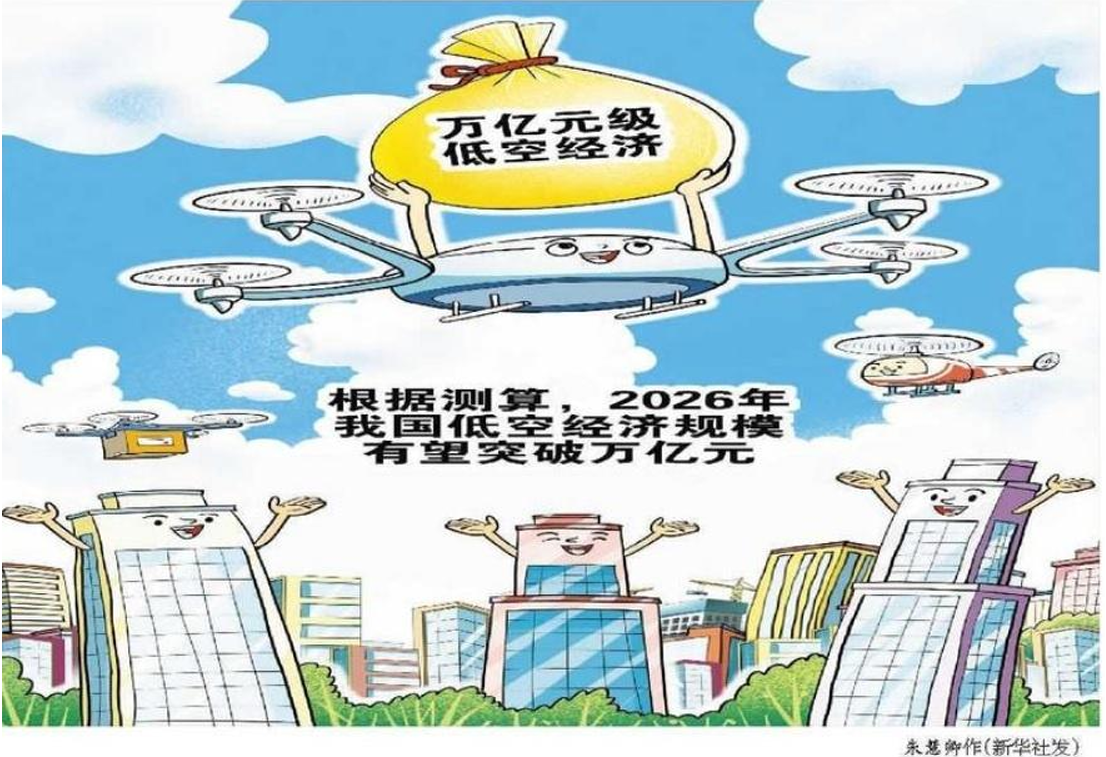With the increasing shortage of land resources, the intensification of urban traffic congestion, the increasing requirements for green and low-carbon and the tightening of human resources, social development is forcing deep changes in the transportation and industrial structure. Traditional transportation and infrastructure are facing bottlenecks, and the low-altitude economy has emerged, which is gradually entering the national strategy and public vision, and has become the representative direction of new quality productivity.
The rise of the low-altitude economy is not accidental, let alone short-lived. 2024 is widely regarded as the "first year of China's low-altitude economy", and behind it is the inevitable result of the joint efforts of multiple forces.
1. Policy catalysis: from concept to national strategy
In 2024, the low-altitude economy will be written into the "Government Work Report" for the first time, and it will be established as one of the "new growth engines", marking the formal establishment of its strategic position. In the same year, the National Development and Reform Commission set up a special "low-altitude economic development department", and the Ministry of Industry and Information Technology and the Civil Aviation Administration of China also set up an industrial coordination group to open up the policy implementation chain and quickly form a policy synergy from the central to the local government.
At the regulatory level, the Interim Regulations on the Flight Management of Unmanned Aerial Vehicles, which will be implemented on January 1, 2024, fill the legal gap and provide institutional guarantee for the development of the industry. At the same time, the Central Air Traffic Control Commission has also issued a series of special measures to focus on the optimization of airspace resources and the construction of an integrated air traffic control system, so as to provide technical and regulatory support for future large-scale flights.
2. Industrial forming: The layout of the whole chain has begun to take shape
After more than ten years of technical polishing and commercial verification, the low-altitude economic industry chain has moved from conceptualization to systematization, and its upstream and downstream links have gradually become clear. It covers multiple dimensions from raw materials and parts manufacturing, R&D and production of complete aircraft, to infrastructure construction, flight support system, operation platform and service application.
In terms of application scenarios, the low-altitude economy has entered the stage of "multi-point flowering". It can be seen in logistics and distribution, agriculture and forestry plant protection, emergency rescue, low-altitude tourism, transportation and other fields. For example, Fengfei Airlines' V2000CG aircraft is being widely used in island logistics, mountain material transportation and emergency response.
The market potential is also considerable. The Civil Aviation Administration of China predicts that the size of China's low-altitude economic market will reach 1.5 trillion yuan in 2025 and is expected to exceed 3.5 trillion yuan by 2035. In the longer term, Roland Berger predicts that by 2050, the global low-altitude economic market may exceed 60 trillion yuan.

Pictured: Low-altitude economic march
3. Technology Capital Resonance: Promote the Industry to Accelerate the "Rise"
Technological innovation has become an accelerator for the rapid growth of the low-altitude economy. Relying on China's perfect manufacturing system, strong innovation capabilities, and the deep integration of big data and artificial intelligence, core products such as eVTOL (electric vertical take-off and landing aircraft) have accelerated the implementation of airworthiness certification and mass production. Fengfei Aviation V2000CG successfully obtained the production license in 2024, marking an important breakthrough in the commercialization process of domestic eVTOL.
Along with technology, there is also the vitality of capital. In 2024, the low-altitude economy will become a new track for key investment by state-owned assets and government guidance funds. A large amount of capital has intensively flowed into the upstream and downstream of the industrial chain, financing booms have appeared frequently, and a number of unicorn companies have risen rapidly, injecting surging momentum into the industry.
4. Local response: policy implementation to accelerate industrial agglomeration
Local governments have actively responded to the call of the central government and competed to introduce supportive policies. In 2024, most provincial-level administrative regions across the country have deployed low-altitude economic development plans. Among them, Beijing took the lead in releasing the "Action Plan for Promoting the High-quality Development of Low-altitude Economic Industries (2024-2027)", and held the first "Low-altitude Economic Innovation Leading Conference", and established a key laboratory of airspace intelligent control and safety assurance, providing a platform for regional industrial agglomeration and technological breakthroughs.
5. Towards popularization: patience is the key to the stability of the industry
Although the prospects are bright, the development of the low-altitude economy is not achieved overnight, and its real "take-off" still requires a patient long-distance run.
Enterprises need to have determination, focus on core technologies, optimize product iteration, and deepen scenario applications to promote the gradual popularization of low-altitude consumption.
Capital needs to be far-sighted, focus on value investment, and avoid blind profit-seeking and short-term speculation.
The government needs more wisdom and patience to promote development while maintaining the bottom line of safety, scientific guidance and orderly planning.
The low-altitude economy is a new engine for the country's high-quality development, an important component of the intelligent transformation of cities, and a new model of green transportation. 2024 is not the end, but the beginning. From the vision under the sky to the reality above the city, we already see the outline of the future. The real "take-off" still needs to be done steadily and for a long time.
Related:
Analysis of Low Altitude Economy and Its Development Status and Trend (1)
Analysis of Low Altitude Economy and Its Development Status and Trend (2)
Analysis of Low Altitude Economy and Its Development Status and Trend (3)
Analysis of Low Altitude Economy and Its Development Status and Trend (4)






